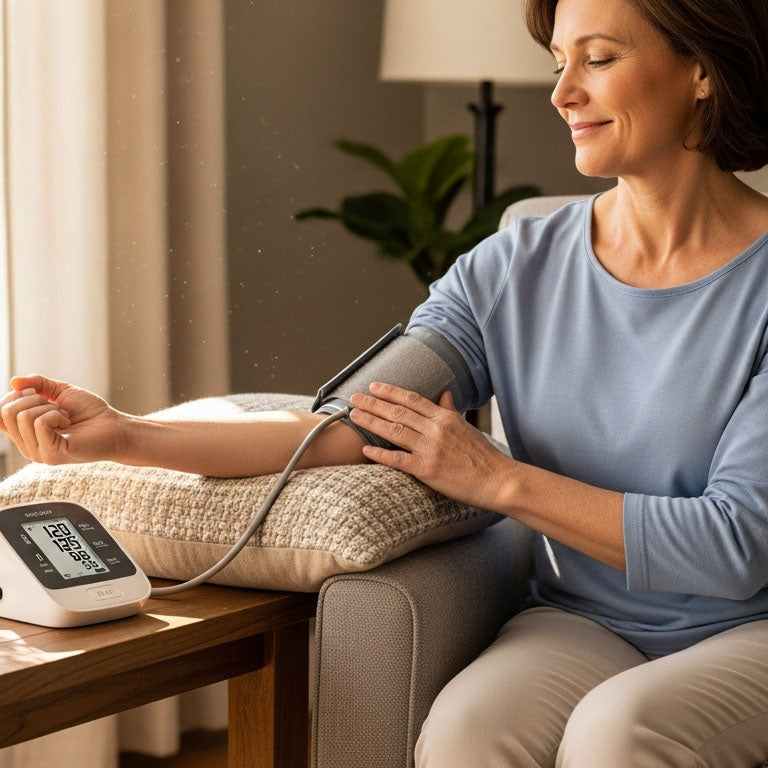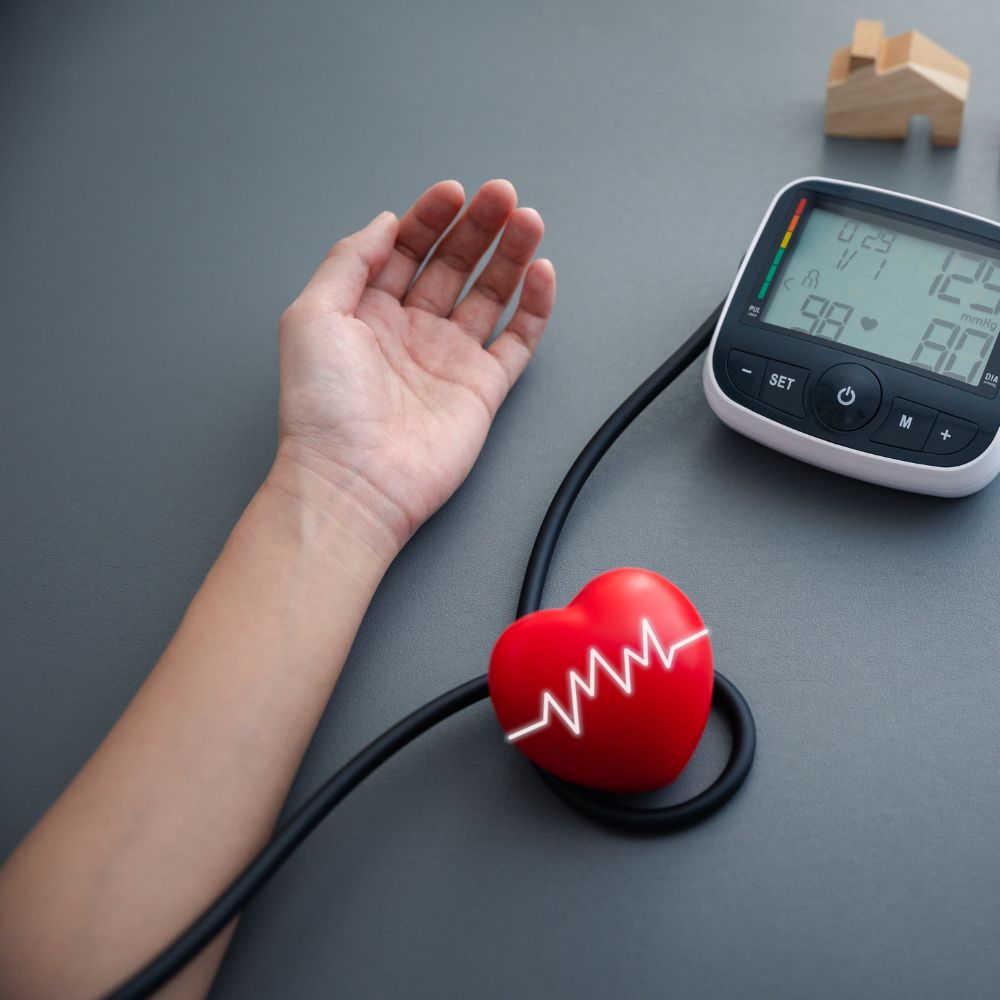High blood pressure—also known as hypertension— is a major risk factor for heart attack, stroke, kidney disease, and more. The good news is that with the right knowledge, lifestyle changes, and regular monitoring, you can manage your blood pressure and protect your long-term health.
What is blood pressure?
Blood pressure is the pushing of blood against your artery walls as your heart pumps. It changes throughout the day, increasing when you’re active, stressed, or have caffeine/nicotine and decreasing when you’re resting. If it stays consistently high over time, it becomes hypertension (high blood pressure).
How is it measured?
A blood pressure monitor, consisting of a cuff wrapped around the upper arm which inflates then releases, gives out two numbers (e.g. 120/75 meaning “120 over 75”):
• Systolic (top number) – pressure when the heart beats.
• Diastolic (bottom number) – pressure when the heart relaxes.
Readings can be taken at the GP, pharmacy, or at home with your own blood pressure monitor.
What is the normal target?
• For most people, ideal blood pressure is 120/80 or lower.
• If you’re on medication, target is usually 130/80 or below.
Your target may differ depending on your health, so check with your doctor.
| Blood pressure | Systolic mmHg (top number) |
Diastolic mmHg (bottom number) |
|
|---|---|---|---|
| Low | Less than 90 | and | Less than 60 |
| Ideal | Less than 120 | and | Less than 80 |
| Normal | 120–129 | or | 80–84 |
| Normal to high | 130–139 | or | 85–89 |
| High | Above 140 | and/or | Above 90 |
What is hypertension (high blood pressure)?
Hypertension means consistently high readings, confirmed after multiple checks over time. Some people experience higher readings at the clinic because they feel anxious (“white coat syndrome”), so checking blood pressure at home may give a more accurate reading.
Why high blood pressure matters?
Over time, untreated hypertension can damage arteries and increase your risk of:
• Heart attack
• Stroke
• Heart failure
• Aneurysm
• Kidney failure
• Dementia
• Eye damage
Causes and Risk Factors
High blood pressure often develops from a mix of lifestyle, medical, and genetic factors. Common risks include:
• Too much salt or processed food
• Alcohol use
• Being overweight
• Lack of physical activity
• Stress
• Sleep apnoea
• Conditions like diabetes, kidney disease, and glandular issues
• Older age
• Family genetic history of high blood pressure
• Some prescription and over-the-counter medications
Symptoms
In most cases, there are no symptoms at all—which is why it’s so dangerous. The only way to know is to get checked by your doctor, nurse, or pharmacist or by checking it yourself with a home blood pressure monitor.
How to lower blood pressure?
Medication may be prescribed, but lifestyle changes play a big role too:
• Eat more fruit, vegetables, wholegrains, and lean protein
• Reduce salt
• Cut back on alcohol
• Stay active—aim for 30 minutes most days
• Manage stress with relaxation or mindfulness habits
Even if you don’t have hypertension, these habits support a healthy heart.
Take Charge of Your Health
High blood pressure doesn’t need to control your life. With healthy routines, support from your GP, and regular monitoring—especially with a home blood pressure monitor—you can stay on top of your health and lower your risks.

